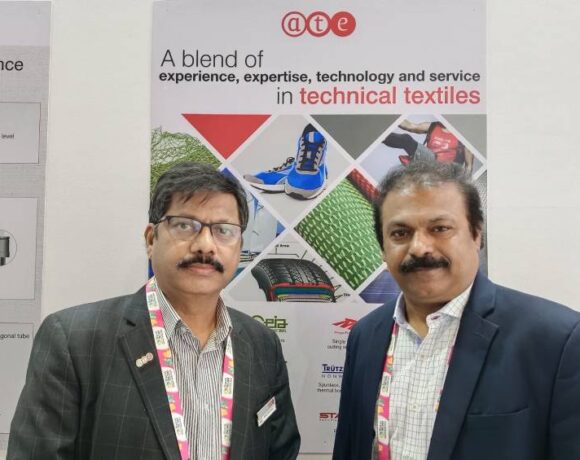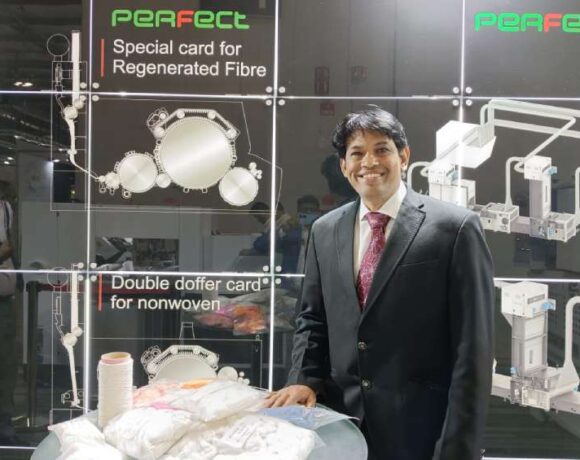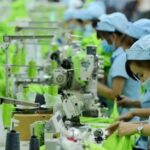‘In Textile Printing, The Primary Focus Has Now Shifted To Sustainability’

All digital machines provide environmental benefits over traditional printing methods as the energy and water consumption is a lot lower, says Shailesh Wani, in conversation with Henry Dsouza, Associate Editor at Textile Insights.
How has the market for digital textile printing evolved in the past few years, and what are the key drivers behind this growth?
Until the Covid year of 2020, the global digital textile printing market grew by around 15% per year. As in many other industries, the effect of Covid on consumer buying behavior was significant. Before the situation normalized, the energy crisis following the conflict between Russia and Ukraine continued to impact consumer sentiment. Additionally, developments in the Middle East have contributed to this cautiousness.
Nevertheless, the situation in India appears to be different. Until recently, the share of digital textile printing in the total textile printing volume in India was lower than in most other countries. As recovery signals began to appear, several Indian printing companies saw this as the right moment to transition to digital. This has resulted in current situation where the Indian digital market is growing faster.
While global growth predictions for digital textile printing are around 10%, the growth rate in India may turn out to be higher than that.
How would you compare digital textile printing technology in terms of market share and growth potential against traditional textile printing methods?
What I described in my answer to the previous question will also happen in other textile regions, but maybe to a lesser extent compared to India, as the digital share was already larger in those regions. However, as the total printed volume grows with the world population in the long run, traditional printing methods, such as rotary printing, will also continue to show growth. In other words, the increase in total printed volume will not be entirely driven by digital printing.
What should a manufacturer keep in mind when integrating digital textile printing into their existing production lines?
The biggest difference lies in the know-how required for traditional versus digital printing. In traditional rotary printing, operators can see the direct effects of their adjustments. In contrast, the digital workflow, involving colour profiles and computer-based processes, is entirely different. Consequently, companies often employ ‘computer-friendly’ individuals for their digital operations.
Moreover, fabrics need to be pretreated before digital printing, but this can be done on any stenter, so a traditional printing company should have no issue in preparing the fabrics. After printing, the post-treatment processes (steaming and washing or curing and washing) are the same for both digital and conventional methods.
What eco-friendly features does your digital printing machine offer for ink usage, energy efficiency, water consumption and waste reduction?
All digital machines provide environmental benefits over traditional printing methods as the energy and water consumption is a lot lower. Within the digital choices of machines, SPGPrints Magnolia has proven to use 20% less inks than any other digital printer to print the same designs. This is thanks to the unique Archer Technology that Magnolia uses.
What are the emerging opportunities for digital textile printing companies in niche markets or specific industry sectors?
During ITMA 2023 last year in Milan, digital pigment printing was the talk of the town. While there is still progress needed to achieve the colour depth and brilliance of reactive printing, the clear sustainability advantage (as steaming is not required) will drive this technology forward.
This development also promotes the use of digital printing in the home textiles sector. Historically, digital printing was predominantly used in the clothing industry, while home textiles favoured pigment printing and wider widths (up to 3.2m). Now, with wider printers available and growing interest in pigment printing, the home textile industry is increasingly adopting digital technologies.
How is digital printing and textile printing technology enabling brands to offer personalized and customized products to meet customer demands? What are the key technological advancements driving this capability?
Digital textile printing has evolved significantly, enabling brands to offer personalized and customized products to meet customer demands. In the past, the focus was primarily on speed, quality and reliability of printing. With advancements in printing technology, we now have better resolutions, smaller ink droplets and improved print quality and reliability. Single pass printing machines have also addressed these issues effectively.
The industry is now shifting its focus towards sustainability. Digital printing is inherently more sustainable compared to conventional rotary and flatbed printing methods. A significant development in this area is pigment printing, which is seen as the future, despite some current limitations in colour brilliance and depth compared to reactive printing. Consumers are increasingly demanding pigment printed fabrics, which is driving innovation in this space.
Additionally, the market is seeing a rise in polyester and sublimation printing. SPGPrints, for instance, has introduced the Rose sublimation printer, contributing to the trend towards more sustainable printing solutions.
Overall, these advancements are not only enhancing the ability to meet customer demands for personalized and customized products but also pushing the industry towards more sustainable practices.
What future trends or developments do you foresee in the digital textile printing industry, and how is your company prepared to adapt to them?
Over the past 20 years, the focus has been on speed and printing quality. Each new generation of printers has been faster than its predecessor, with resolutions increasing and droplet sizes decreasing, leading to continuous improvements in image quality. In the last decade, there has also been a growing emphasis on reliability, which was previously a challenge for high-volume production.
With the introduction of single-pass machines and scanning machines equipped with 32 to 120 heads, speed issues have been resolved. Improvements in existing printhead technologies and the advent of new printhead technologies have largely addressed reliability concerns. As a result, the primary focus has now shifted to sustainability, with pigments increasingly replacing reactive, acid or disperse applications, and sublimation replacing disperse applications.
SPGPrints launched its pigment ink range in 2022 and introduced high-speed machines like Magnolia and Jasmine, along with the single-pass printer PIKE. They also introduced the entry-level printer Violet and expanded the Magnolia to cater to the home textile market. Additionally, at ITMA 2023, SPGPrints introduced the Rose printer for sublimation printing.
How was the business for Stovec in the last fiscal year, and what are your expectations for this year?
The FY 2023 was good for us, even better than the previous year. We made significant strides in the market with our new wider width rotary screen printing machine, which we launched for the home textiles and fashion markets. Previously, we were focused on narrow width rotary screen printing machines, so this development was a major milestone. Our traditional businesses, like the screen business, also performed very well, and we saw strong results in our industrial segment as well
For 2024 also, we expect better performance across all three of our business segments. In digital printing, we are making significant progress with new product launches. Our high-quality Magnolia printing machine, was followed by our 32 print head digital printer Jasmine, and our sublimation printer, Rose. Additionally, we also introduced an entry-level Violet printer, thus completing our product portfolio. Along with the printer, we also address the complete range of digital inks needs. These developments should boost our revenue.















